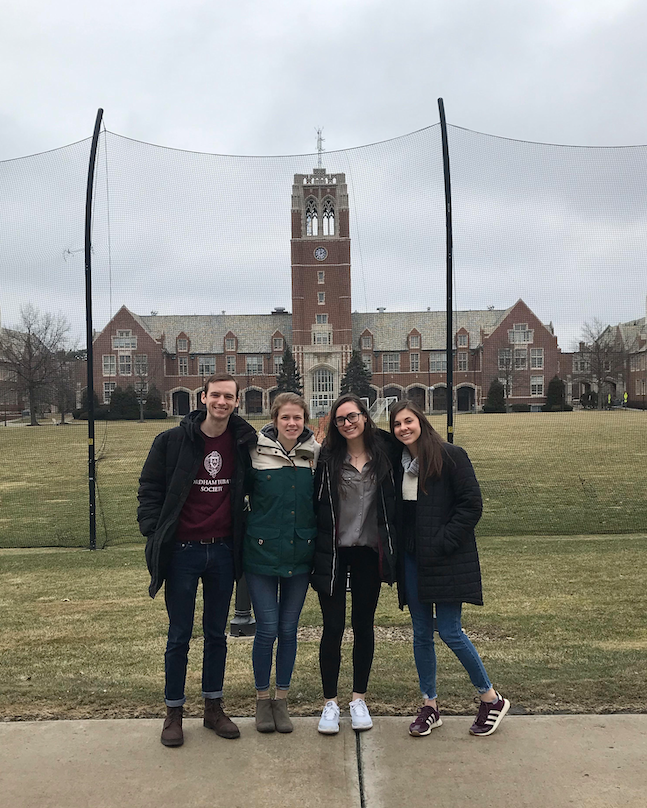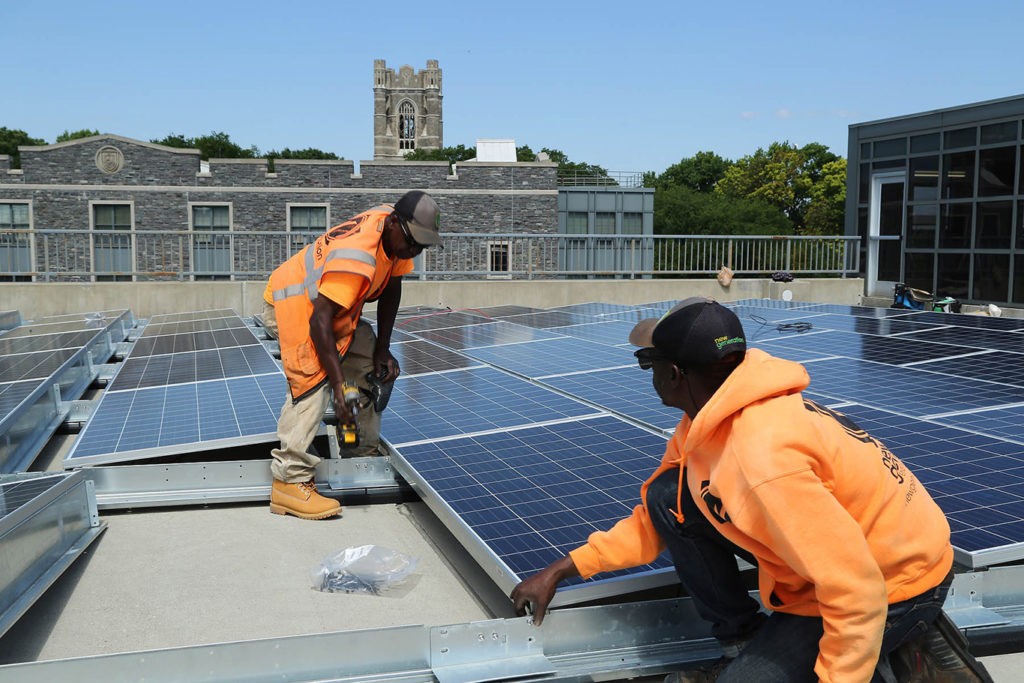Authors: Megan Farr, first-year; Hannah Teligades, first-year; Andrew Souther, sophomore; Rachel Daso, sophomore
Often, when we think of Fordham’s Honors Program, we get so caught up in our specific program, curriculum, and community that we forget that we, as a Jesuit university, belong to a much larger network of other honors programs. A few weekends ago, we had the opportunity to travel to the American Jesuit Colleges and Universities Honors Conference at John Carroll University in Cleveland, Ohio.

We spent the weekend being reminded of our interconnectedness and dependence on not only other Fordham Honors students, but also on other honors programs across the country. At the conference, various schools volunteered to lead discussions on their favorite aspects of their respective programs, so we could all learn from each other’s strengths.
We presented on our Student Activity Committee (SAC), which organizes student-led, Honors-specific activities and events throughout the school year. Several other honors programs shared that they struggled to create an honors community within their larger universities, and we felt like SAC offered a unique way to build community within Honors, but in a more social, rather than academic, setting. We focused on a few specific committees within SAC: Wellness, Alumni Relations, Recruiting, Alpha House Upkeep, and Bronx Exploration. Other schools were interested in how flexible and fluid our SAC committees are, and how easily students of all experiences, grade levels, and fields of interest get can involved. We learned from other programs’ presentations and brainstormed what we might like to incorporate into our own program in the future.
We also had a great time building community and getting to know each program through its students and their unique personalities. Besides the obvious common ground of being honors students at Jesuit schools, we found that many of us had taken similar classes and read similar materials, which gave us a starting point for conversations. Being in this conference environment gave us an opportunity to talk about serious topics, but also to have fun learning about different parts of the country and different schools. Not only did we learn about other programs, but we were able to build friendships with honors students from across the US.
Overall, our experience at AJCU gave us an opportunity to learn about other honors programs, brainstorm possible additions to Fordham’s Program, and further build our Jesuit community.
